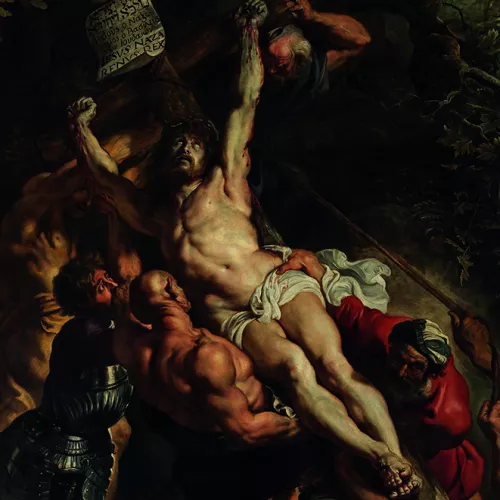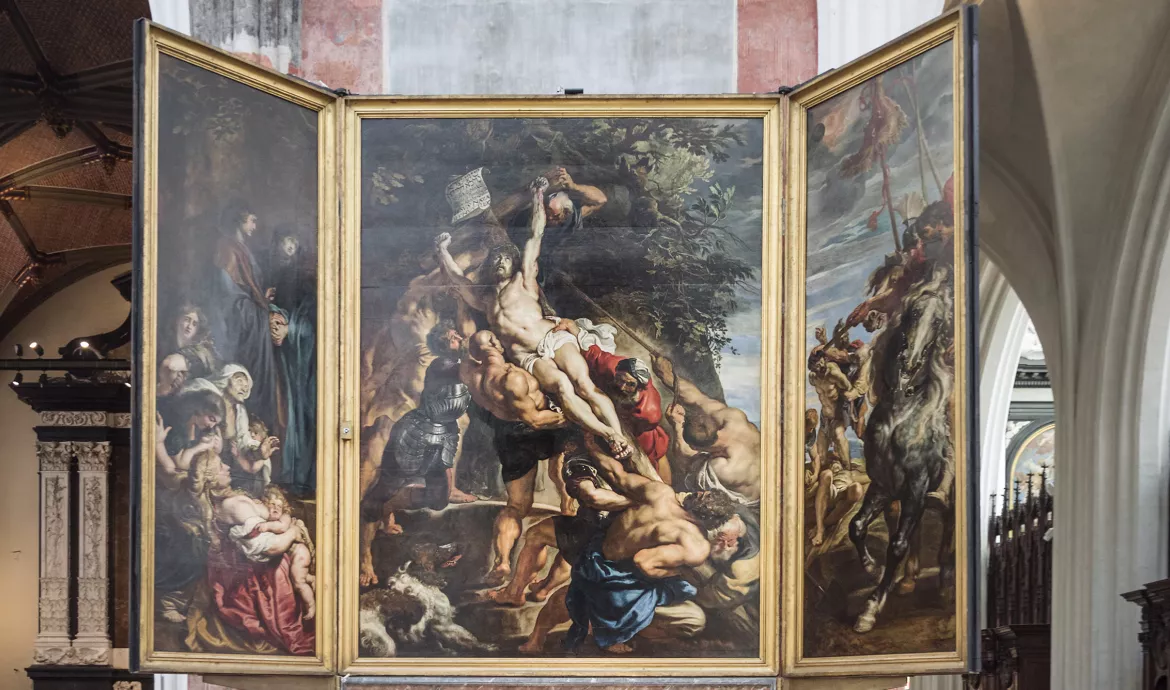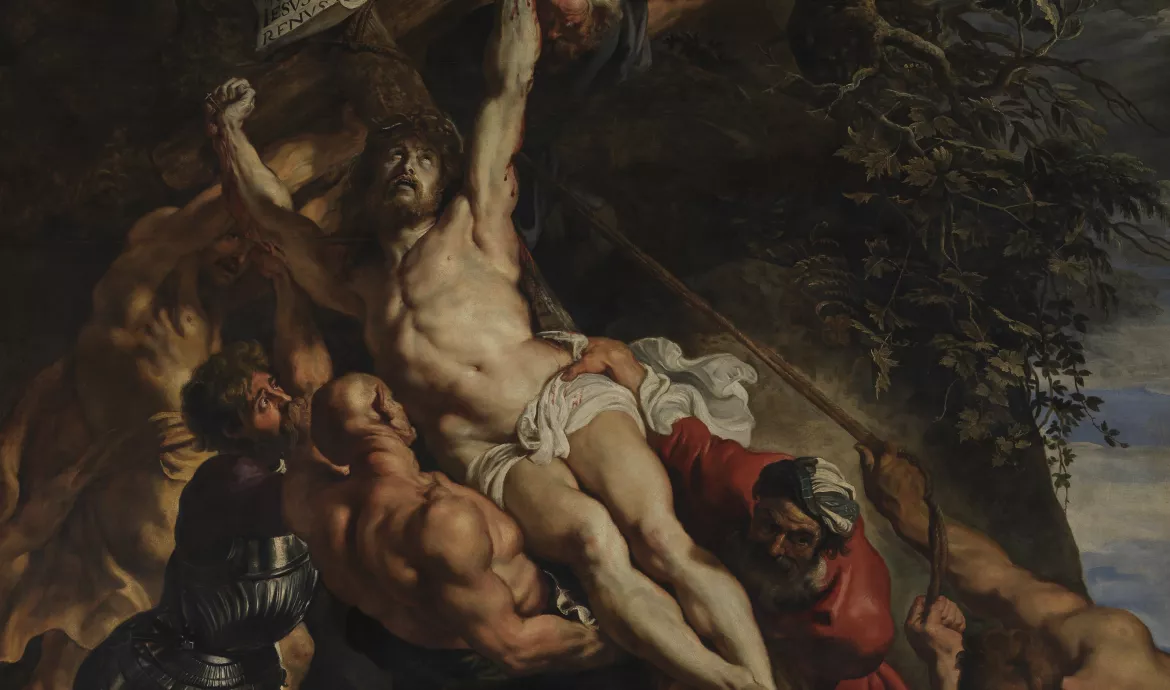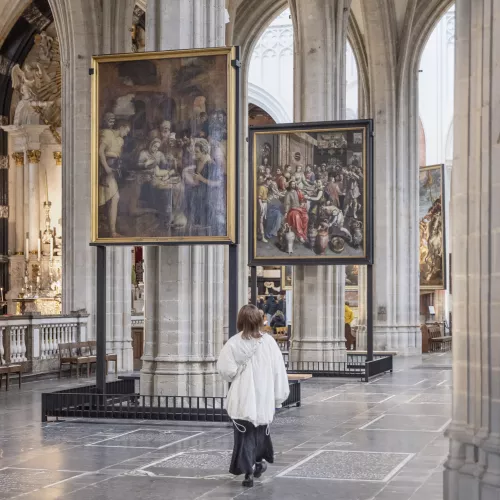Imagine the deafening din that goes with this painting. To the right the merciless voice of the centurion who, sitting atop his snorting horse, orders an execution. In the middle panel, the roars of the massively muscular brutes who carry out the order. To the left, the weeping child amidst the sobbing and bitter tears. The execution of Christ involves different people in different ways. We deal with the painful reality of suffering and death in various ways. Now hear the utter silence of the man who is about to die. He does not resist, he surrenders. It almost seems as if he is looking beyond this moment. Is it conceivable that even in this moment, one dares to hope?
Raising of the Cross
You may write me down in history
With your bitter, twisted lies,
You may trod me in the very dirt
But still, like dust, I'll rise.
Does my sassiness upset you?
Why are you beset with gloom?
’Cause I walk like I've got oil wells
Pumping in my living room.
Just like moons and like suns,
With the certainty of tides,
Just like hopes springing high,
Still I'll rise.
Did you want to see me broken?
Bowed head and lowered eyes?
Shoulders falling down like teardrops,
Weakened by my soulful cries?
Does my haughtiness offend you?
Don't you take it awful hard
’Cause I laugh like I've got gold mines
Diggin’ in my own backyard.
You may shoot me with your words,
You may cut me with your eyes,
You may kill me with your hatefulness,
But still, like air, I’ll rise.
Does my sexiness upset you?
Does it come as a surprise
That I dance like I've got diamonds
At the meeting of my thighs?
Out of the huts of history’s shame I rise
Up from a past that’s rooted in pain I rise
I'm a black ocean, leaping and wide,
Welling and swelling I bear in the tide.
Leaving behind nights of terror and fear I rise
Into a daybreak that’s wondrously clear I rise
Bringing the gifts that my ancestors gave,
I am the dream and the hope of the slave.
I rise I rise I rise


Raising of the Cross
Rubens made this painting for the meanwhile demolished St Walburga Church in Antwerp. During the French reign the work was transported to Paris. Upon its return after the fall of Napoleon it was given a place in our Cathedral. The semi-relief that originally featured below the painting can also be admired in this church building. It is included in the altar construction of Rubens’ Assumption of the Holy Virgin.
Raising of the Cross
This huge triptych is teeming with activity and movement. This was new to the eyes of Rubens’ contemporaries. In this work Rubens purposely creates a powerful image that grabs us by the throat. To achieve this, he breaks the viewer’s expectations. One example is the structure of the triptych. Usually a triptych is a combination of three different scenes: one in the middle and two more in each of the side panels. Not in this case. The three panels constitute a single scene painted in such a way that the viewer is drawn into the action, even from a great distance. You are there when the centurion screams his murderous orders. You can hear the snorting of his horse. You can feel the tremendous effort that goes into raising the cross. The utter devastation of Jesus’ family and friends is palpably present.




